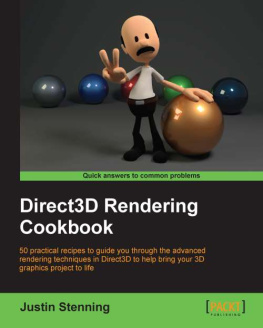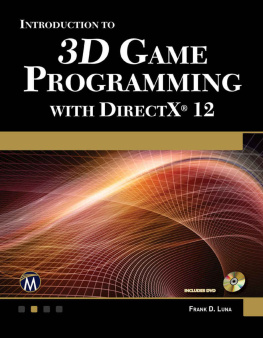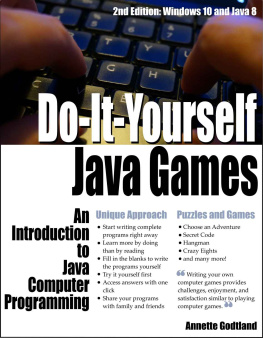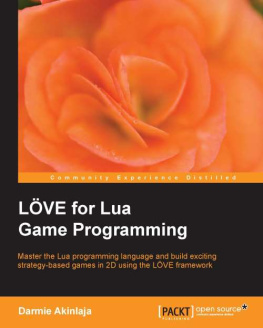About the Author
Pooya Eimandar was born on January 07, 1986. He graduated with a degree in Computer Science and Hardware Engineering from Shomal University and has been programming mainly in DirectX and OpenGL since 2002.
His main research interests are GPU-programming, image processing, parallel computing, and game developing.
Since 2010, he has been leading a game engine team for a company Bazipardaz, working on their latest titles for Xbox 360 and PC. You can find more information about this at http://persianengine.codeplex.com/.
I thank God for every moment of my life.
I would like to thank the staff at Packt Publishing, in particular Yogesh Dalvi and Amigya Khurana, and thanks a million to the technical reviewers for their valuable suggestions.
Also, I would like to thank Amir Sarabadani, Seyed Mohammad Hossein Mayboudi, and Simin Vatandoost for their valuable support while editing the book.
I would also like to thank my colleagues at Bazipardaz, and finally my family for their love and support.
Your feedback is valuable to me, so never hesitate to contact me. You can find me at http://www.Pooya-Eimandar.com.
About the Reviewers
Doron Feinstein is a Senior Graphics Programmer at Rockstar Games and is the author of the book HLSL Development Cookbook published by Packt Publishing .
After working with simulations for a number of years, he decided to switch to an exciting career in the games industry. Max Payne 3 and All Points Bulletin (APB) are among some of the titles Doron has worked on commercially.
Stephan Hodes has been working as a Game Engine programmer for almost 15 years while GPUs made the transition from fixed function pipeline to programmable shader hardware. During this time, he worked on a number of games released for PC as well as for Xbox 360 and PS3.
Since he joined AMD as a Developer Relations Engineer in 2011, he has worked with a number of European developers on optimizing their technology to take full advantage of the processing power that the latest GPU hardware provides.
He is currently living with his wife and son in Berlin, Germany.
Vinjn Zhang is an enthusiastic Software Engineer. His main interests in programming include game development, graphics shader writing, human-computer interaction, and computer vision. He has translated two technical books into Chinese, one for the processing language and one for OpenCV.
Vinjn Zhang has worked for several game production companies including Ubisoft and 2K Games. He is currently working as a GPU Architect for NVIDIA, where he gets the chance to see the secrets of GPU. Besides his daily work, he is an active github user. He tries to make every piece of code open source. His website is also an open source repositoryVisit his website http://vinjn.github.io/.
www.PacktPub.com
Support files, eBooks, discount offers and more
You might want to visit www.PacktPub.com for support files and downloads related to your book.
Did you know that Packt offers eBook versions of every book published, with PDF and ePub files available? You can upgrade to the eBook version at > for more details.
At www.PacktPub.com, you can also read a collection of free technical articles, sign up for a range of free newsletters and receive exclusive discounts and offers on Packt books and eBooks.
http://PacktLib.PacktPub.com
Do you need instant solutions to your IT questions? PacktLib is Packts online digital book library. Here, you can access, read, and search across Packts entire library of books.
Why Subscribe?
- Fully searchable across every book published by Packt
- Copy and paste, print and bookmark content
- On demand and accessible via web browser
Free Access for Packt account holders
If you have an account with Packt at www.PacktPub.com, you can use this to access PacktLib today and view nine entirely free books. Simply use your login credentials for immediate access.
Dedicated to my mother
Preface
In the last few years, the number of devices in which complex graphics are embedded has vastly increased. Recently, Microsoft released a new version of Windows called Windows 8. The Direct3D 11.1 API is also included with Windows 8 and provides a significant expansion in capabilities over it's previous version.Microsoft showed that Direct3D 11.1 plays a key role in writing high-performance 3D Metro applications in Windows 8. To ease portability, Windows 8 introduces a new type of application called the Windows Store application, which is a great opportunity for developers to write cross-platform applications to write cross-platform applications over the Microsoft platforms.
This book will help you easily create your own framework and build your first game for Metro Style all by yourself in order to publish it on the Windows Store.
What this book covers
, Say Hello to DirectX 11.1 , covers the new features of Windows 8, DirectX 11.1, and the new extension of C++ called C++/CX. This chapter also covers how to set up a framework and initialize the Direct3D device.
, GettingStarted with HLSL , provides you with a preliminary knowledge of the new features of HLSL in DirectX 11.1 and explains how to interact with buffers in Direct3D. It also introduces the new additions of Direct2D for Windows 8.

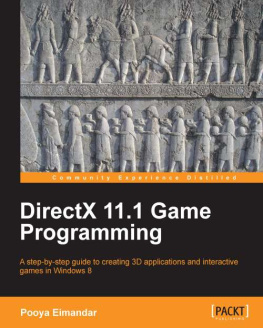



![Damilare Darmie Akinlaja [Damilare Darmie Akinlaja] - LOVE for Lua Game Programming](/uploads/posts/book/124110/thumbs/damilare-darmie-akinlaja-damilare-darmie.jpg)

